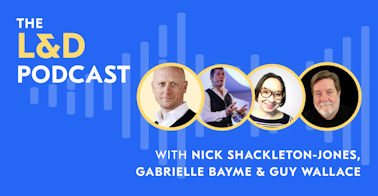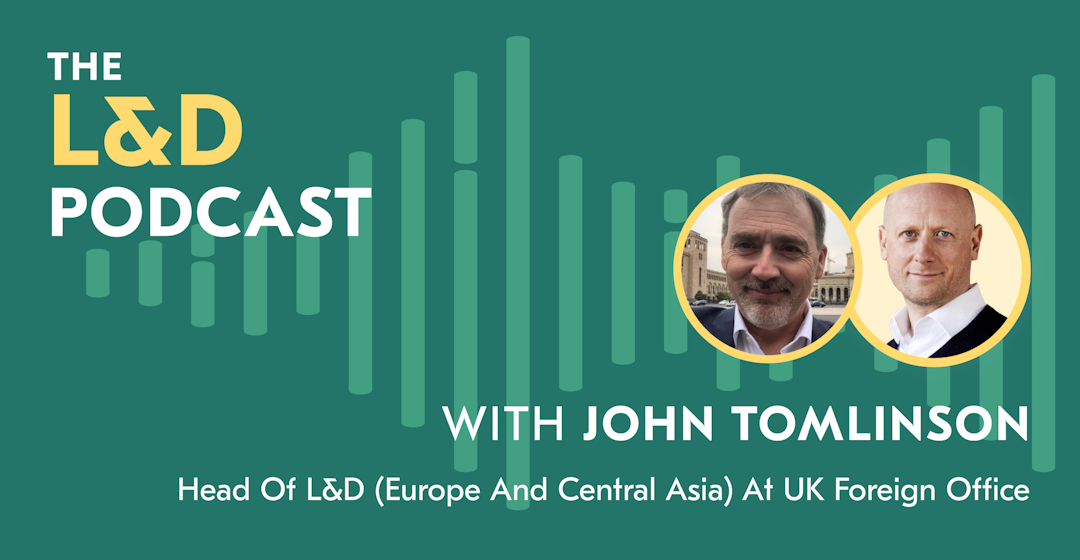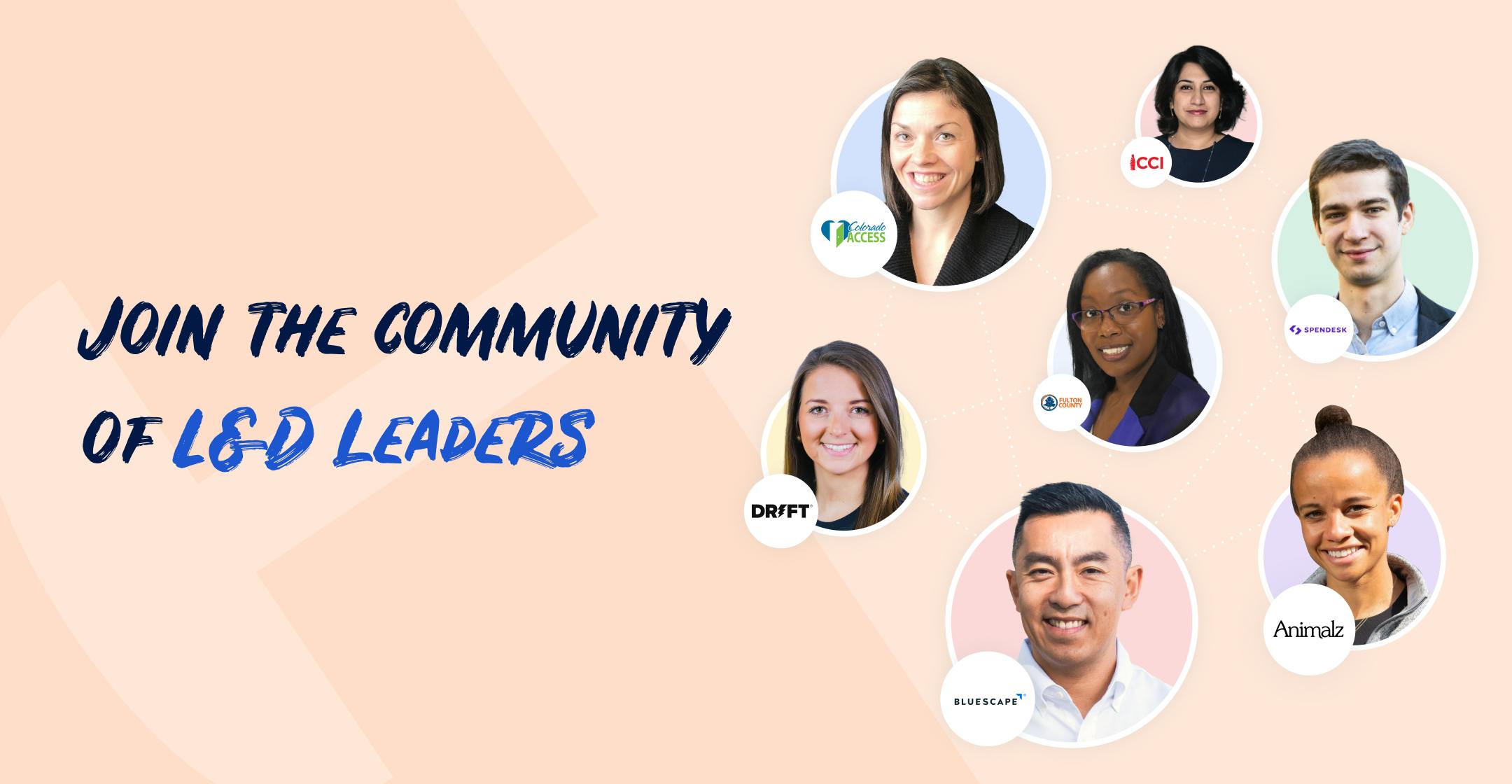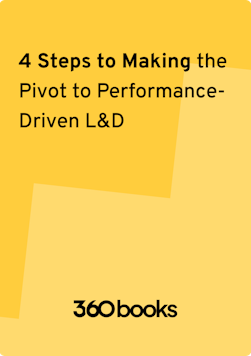

Training & Learning
Is L&D Too Quick to Throw Out the Tried and True? Expert Insights From John Tomlinson
As L&D leaders, we are sometimes guilty of latching on to the latest pseudo-professional approaches that seemingly keep popping up. This begs the question: Are we too quick to throw out the tried and true?
As is often the case, these shiny and new approaches are rarely as robust as they first might appear. So, what’s the trick of getting L&D right? And what should L&D leaders be focused on to successfully evolve?
In this recap (check out the full episode below), I speak with John Tomlinson, Head of Learning & Development (Europe and Central Asia) at the UK Foreign Office and the Trainer Tools podcast host, about how the more L&D changes, the more it stays the same, and his three long-term goals for you to strive towards in the coming years.
Read on to hear about the significance of people-centred learning and development, how pseudo-professional approaches aren’t the way to go, and why the L&D function is ineffective if it isn’t central to the organization.
First, let's discuss how learning and development can sometimes move too fast, abandoning effective approaches.
Is L&D too quick to throw out the tried and true?
As John points out, learning and development is filled with professionals who are passionate about learning, but who can also move too quickly at times.
“We are sometimes guilty of trying to move on from things and calling them old hat when actually they're not,” John says, “and I'm guilty of having done this.”
Reflecting on his career, John explains that some of the approaches or interventions he was leveraging in the early days were, in fact, really impactful. “They were right because L&D is still a people business,” he says. “I got it right when I was having conversations and not dominating the space as the trainer at the front of the room in teacher mode.”
We are sometimes guilty of trying to move on from things and calling them old hat when actually they're not - I'm guilty of having done this.
“I got it right when I was connecting with people and not overthinking the psychology angle. When I do facilitate learning, I lean on approaches that are people-focused and on my own curiosity.”
Stepping away from pseudo-professional L&D
In John’s experience, L&D has been guilty of adopting a pseudo-professional approach, including methods such as learning needs analysis or applying learning styles, which aren’t as robust as they first appear.
“With a learning needs analysis, the outcome is still a list of training courses,” he explains. “Essentially, all you've done is put your net in the pond and come out with a load of courses. You haven't drilled down to find the real skills and behaviors that differentiate normal and really high performance.”
“We certainly used to rely a lot on those shallow pseudo-professional tools that made it look like we were doing something more scientific than we were. I've been very conscious of trying to move away from that.”
Despite their prevalence in popular theory, John is not alone in the L&D industry in believing that learning styles are debunked. And this raises the interesting question of what tools and approaches John and his team do leverage in their organization.
Leveraging the business partnering approach
John and his team use a business partnering approach, which is about asking those questions that get to the core of the problems they solve.
“We have an in-house model that we've developed, which is a simplified way of structuring the conversations that we hope to have with our internal clients,” he explains.
“When it comes to delivery, we structure things into blended programs. We talk a lot about the 70-20-10 approach, and that’s become a useful shorthand that our customers understand. Our business leaders know it's their responsibility to think about other activities that contribute to upskilling, not just what people learn in the 10% formal learning space.”
Related: The Bigger Picture: Mirjam Neelen's 4 Tips on Aligning Stakeholders When Pivoting to Performance L&D
Developing an in-house evaluation system that fits your needs
John and his team have developed an in-house evaluation system to determine if their training solutions are achieving their goals.
“At the lowest level,” he explains, “it's structured around the objectives the learning sets out to achieve and then testing those before and after, either with 360 feedback or self-analysis.”
For large leadership programs involving diverse groups of people, John and his team structure the learning around capability statements, which they test before. “This has proven to be effective as it looks at behaviors from the perspective of the recipients of the behavior.”
If John is working with a single team, he makes an impact by nailing down the in-context and specific objectives to understand the performance gap. “You can measure this effectively because you've defined the context so tightly at the start,” he says.
Getting L&D to be the central fabric of the organization
As John explains, one of the biggest challenges is that L&D often sits peripheral to the rest of the organization.
“L&D is not central to how the organization achieves performance,” he says. “Even though we call it L&D, people just hear training. It’s like a synonym, and it shouldn’t be. People think of training as a little bit of a treat or an extra.”
John has noticed that when training sits at the edges of a company, it is not seen as central to how the business succeeds. This is when we receive requests for training that are merely box-ticking exercises.
Even though we call it L&D, people just hear training. It’s like a synonym, and it shouldn’t be. People think of training as a little bit of a treat or an extra.
“If we can, we shouldn't be giving into that, but sometimes we have to because we have to establish the relationship with the organization first,” he says, “however, we’ve also got to establish our own credibility to some extent. So, I know it's not quite as simple as just saying no.”
For example, when John was at an airline, the engineering, pilot, and cabin crew training were tied into the company because they were considered integral to the organization. Yet, on the third floor, the L&D team was running management training every now and again.
“So, you've got training done really well for pilots, engineers, and cabin crew where it's massively attached to how you do the job,” says John, “and then you've got us in a classroom doing this sort of generic out-of-context stuff. Little wonder we end up on the periphery.”
Looking ahead: 3 long-term goals for L&D
John explains that the biggest challenge for L&D over the next five years or so is threefold.
As an L&D leader, it's important to educate other leaders in the organization about the true impact of L&D, establish industry standards, and prioritize the human aspect of learning and development.
1. Helping other leaders understand how L&D can make a real difference
First, John explains that L&D leaders need to invest in the ongoing education of our customer base so they can better understand what they need.
“I think there's a responsibility as an L&D leader to be educating our other senior colleagues in what they can do so we can have a chance of landing better solutions with them,” he says. “And how the old-fashioned isolated training course isn't the solution.”
I think there's a responsibility as an L&D leader to be educating our other senior colleagues in what they can do so we can have a chance of landing better solutions with them.
2. Setting the standards of our industry
Next is to keep pushing towards the goal that learning is a discrete product.
“I do like phrases like ‘learning journey’ because they make a good point,” John says. “Meaning, learning journeys of in-context experiences which help people acquire knowledge, skills, help them reflect, and to improve.”
“Often, you tend to get resistance from designers and providers that will do what they've always done. So, pushing for better standards of learning programs and properly researched content is a must.”
3. Promoting L&D as a people business
Finally, L&D leaders have a responsibility around how we leverage technology like AI, but as John says, we don’t have to be the first adopters of the latest advancements.
The learning and development function is about teaching individuals how to enhance their management skills, become better leaders, have a greater influence, and make a bigger impact.
“L&D is very interpersonal, human, and behavioral,” explains John. “We can wait for things to be more or less proven and then work out how to get the most value and not be chasing shiny objects or worrying about being at the vanguard.”
Thanks to John for sharing his experience and insights with us! Keen to learn more from L&D experts? Check out our episode with Lila Warren about her approaches to impacting performance with learning solutions delivered at the point of need or a panel of three L&D experts discussing how to measure the impact of L&D.
Want more peer insights on transforming workplace learning? Sign up to become a member of the L&D Collective, and check out our other #CLOConnect interviews with top L&D leaders on driving growth and scaling culture through Collaborative Learning. Or you can subscribe (below 👇) to our weekly newsletter to receive our latest posts directly in your inbox.




